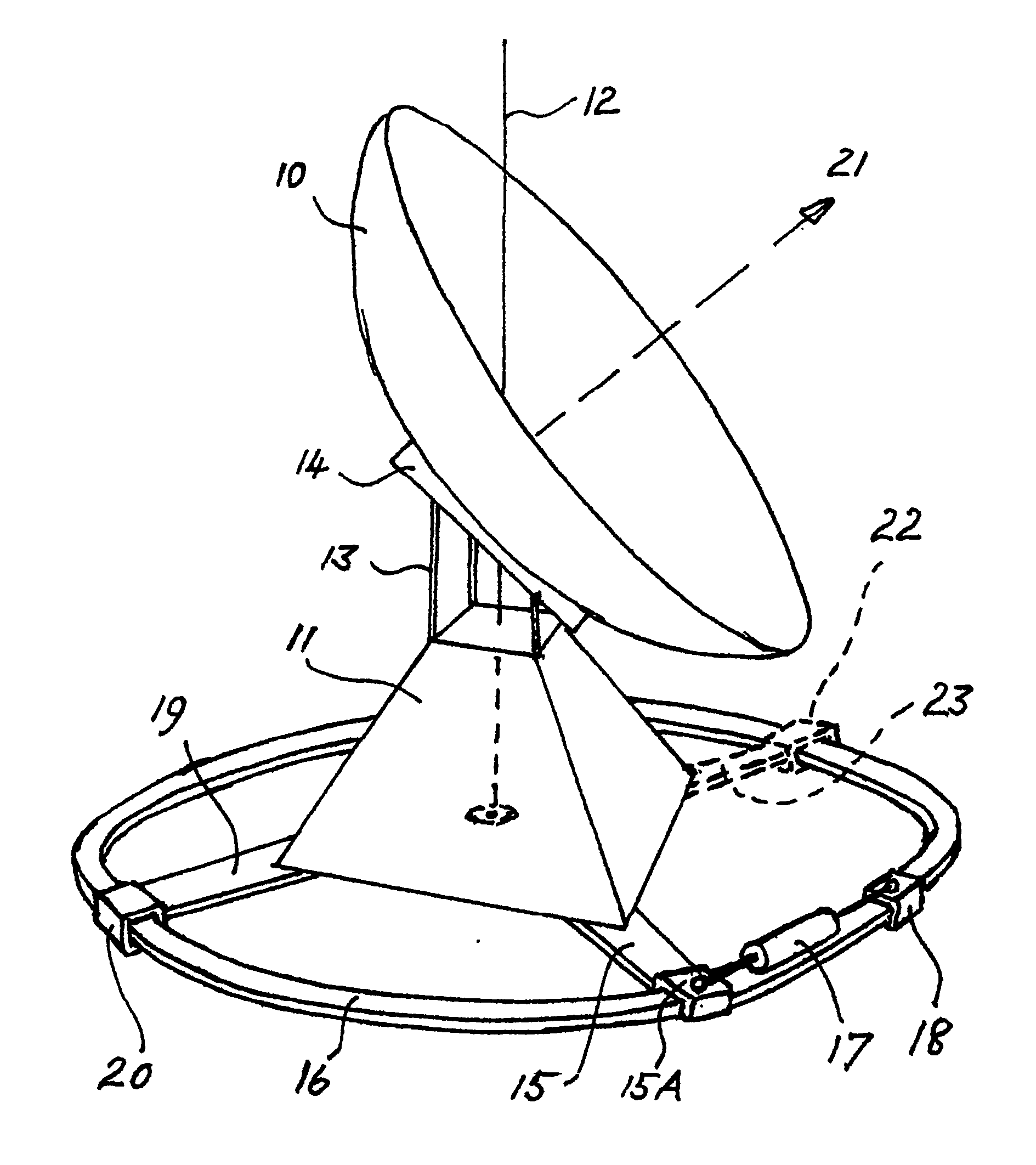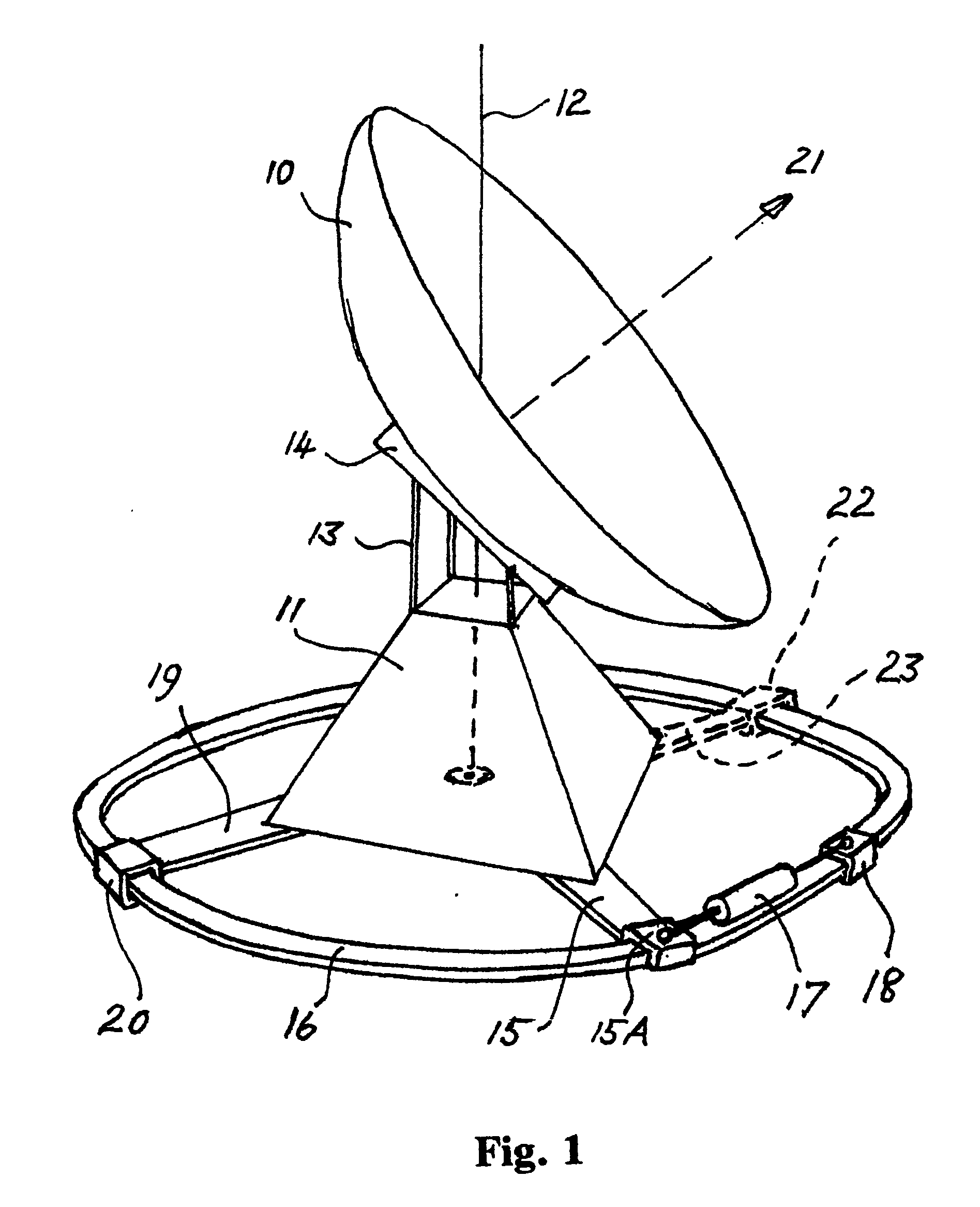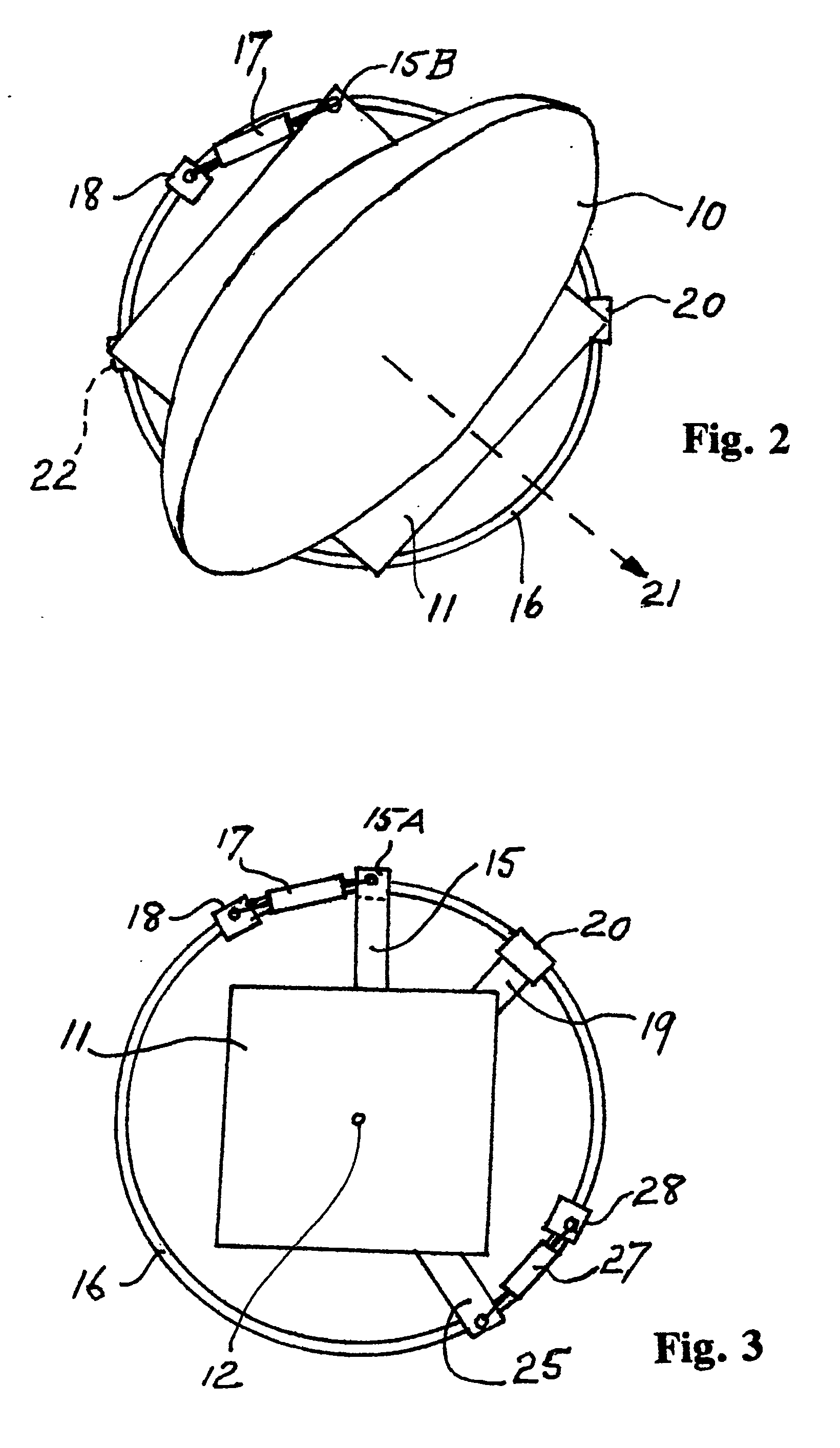Apparatus for rotation of a large body about an axis
a technology for rotating bodies and axes, which is applied in the direction of machine supports, manufacturing tools, lighting and heating apparatus, etc., can solve the problems of increasing the cost of electric or hydraulic motors, increasing the cost of drive systems, so as to achieve less cost and more reliability.
- Summary
- Abstract
- Description
- Claims
- Application Information
AI Technical Summary
Benefits of technology
Problems solved by technology
Method used
Image
Examples
Embodiment Construction
[0034]FIGS. 1 and 2 each show, schematically, a dish antenna to be rotated about a vertical axis 12. The dish antenna for which the present invention was developed is a large solar energy collector which has been assembled at The Australian National University, in Canberra, Australia. That solar energy collector has been described in the specifications of, inter alia, Australian patents Nos. 677,257 and 700,607 and U.S. Pat. Nos. 5,757,335 and 5,934,271. However, it is emphasised that the solar energy collector and the dish antennae featured in FIGS. 1 and 2 are only examples of a rotatable structure with which the present invention may be used, and the present invention is not limited in its application to solar energy collectors generally, or to rotatable antennae.
[0035] The antennae illustrated in FIGS. 1 and 2 each have a dish 10 supported on a base frame 11. The support of the dish on the base frame is shown schematically in FIG. 1 by columns 13 and a support unit 14. The supp...
PUM
 Login to View More
Login to View More Abstract
Description
Claims
Application Information
 Login to View More
Login to View More - R&D
- Intellectual Property
- Life Sciences
- Materials
- Tech Scout
- Unparalleled Data Quality
- Higher Quality Content
- 60% Fewer Hallucinations
Browse by: Latest US Patents, China's latest patents, Technical Efficacy Thesaurus, Application Domain, Technology Topic, Popular Technical Reports.
© 2025 PatSnap. All rights reserved.Legal|Privacy policy|Modern Slavery Act Transparency Statement|Sitemap|About US| Contact US: help@patsnap.com



